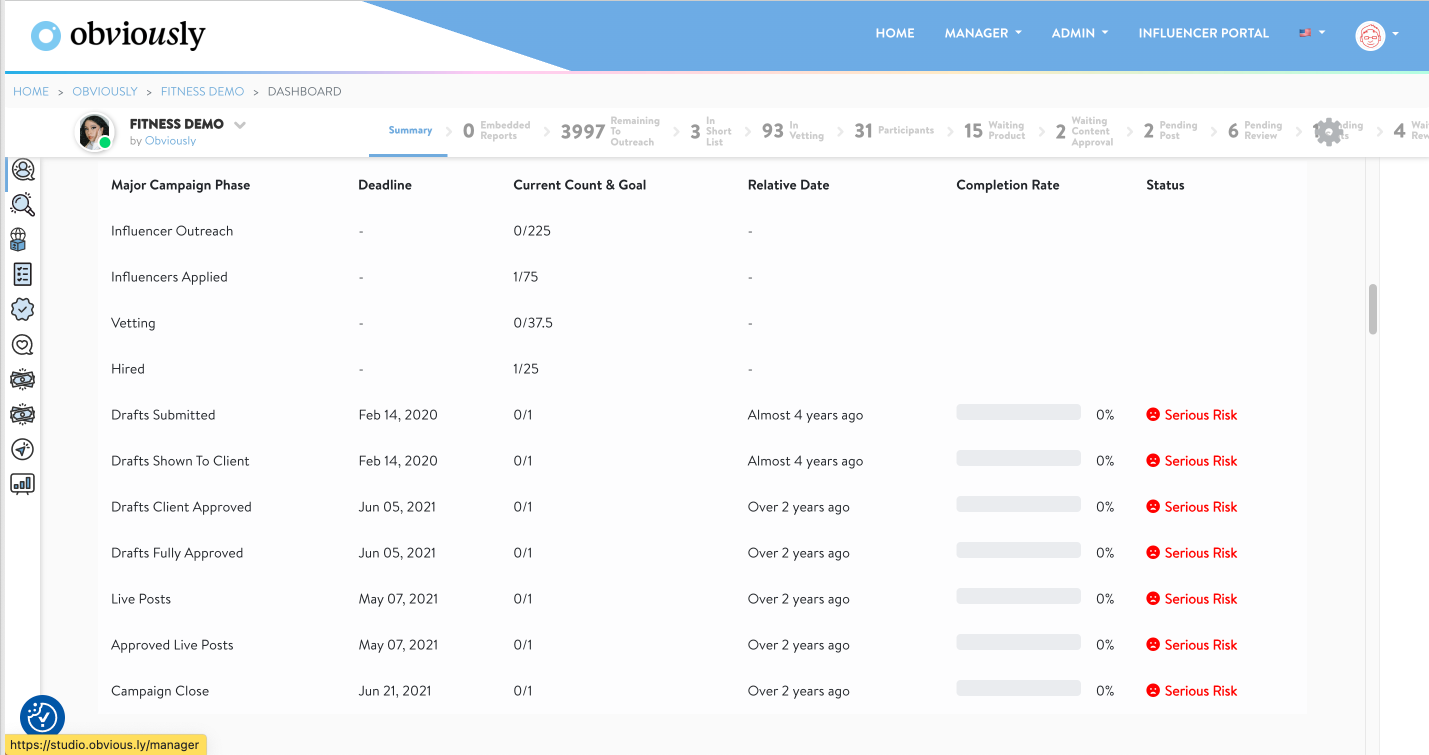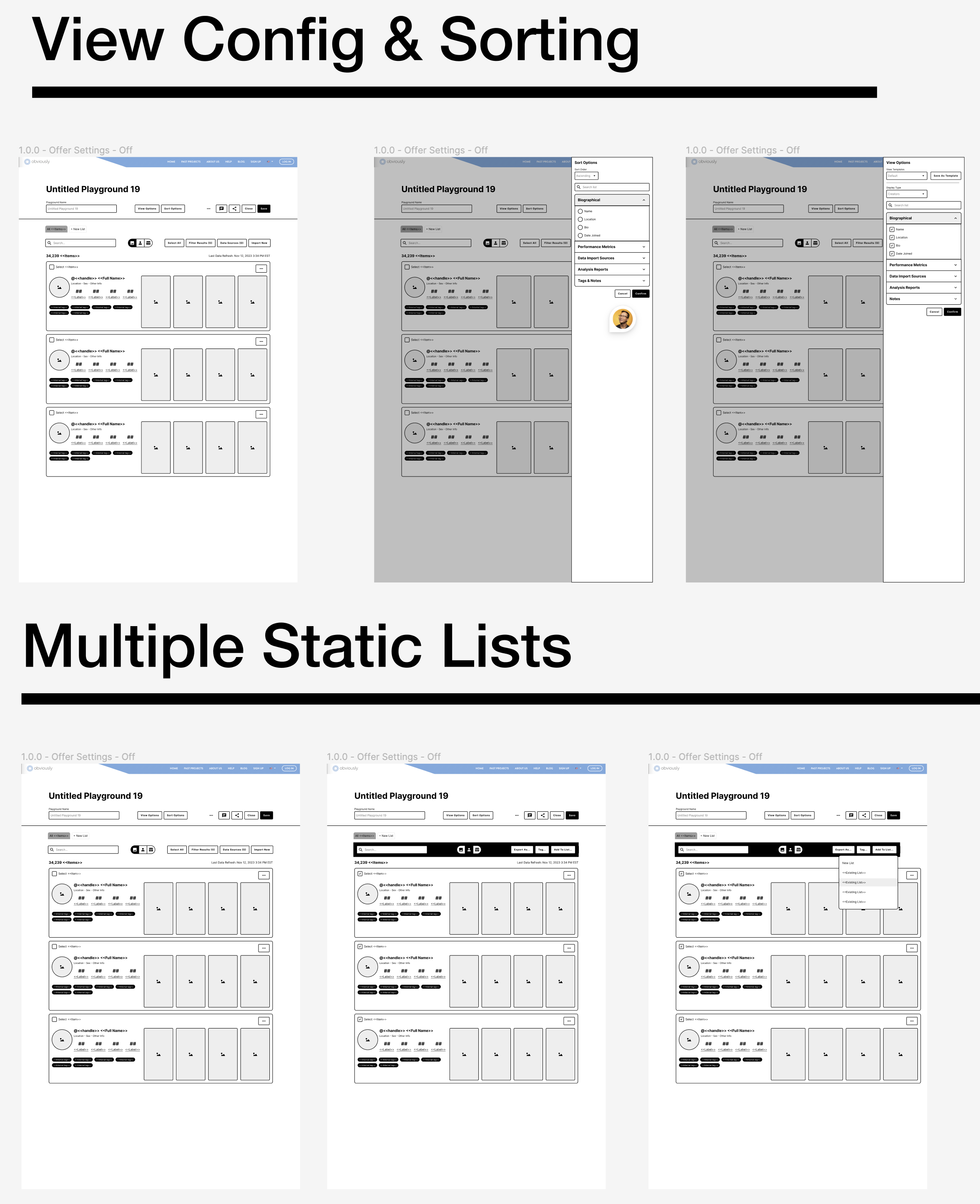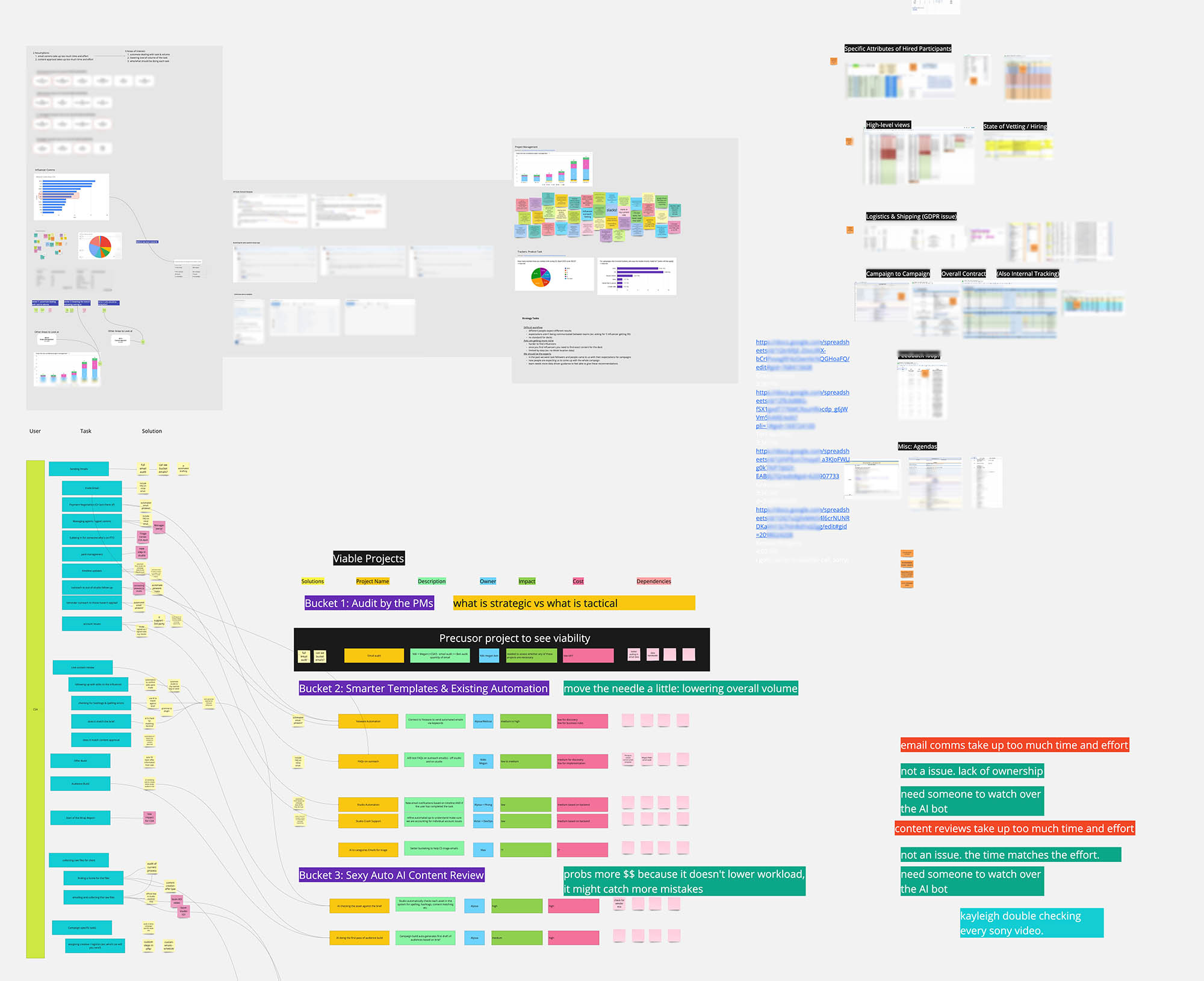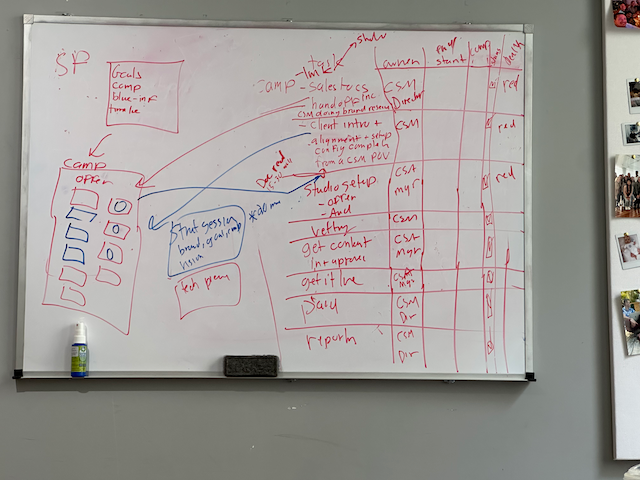Obviously #3
Need for Efficiency
About a decade into Obviously existence, they sold themselves to an advertising conglomerate (WPP via VML, a daughter company of WPP.) Enthusiasm was optimistic until the realities of integration became real.
The shift in our client base during the acquisition fundamentally changed the philosophy of the company. Before it was a larger diversity of smaller companies that had fairly light demands on our services. The standard workflow of our software could handle the linear timelines of the campaigns.
However, the shift to mega multi-national corporations necessitated a more non-linear and dynamic workflow. This additional burden scales disproportionately on both the human labor and software flexibility needed. Meaning our new edict was now urgently about increasing efficiency.
"Can AI fix this?"
The natural question from leadership was could AI replace all the things? To answer this, the PM and I embarked on a discovery project that involved cycles of:
- Auditing existing processes. All team members were mapped to the flow of tasks as we understood them today. Auditing existing time sinks. Where were our colleagues spending the most time on their day-to-day?
- Interviewing all job roles. They outlined their day-to-day, their meetings, their worries and anxieties, and their goals.
- Taking vendor calls. Any-and-all AI vendors were vetted to see what services could be leveraged.
- Competitor audits. What was in their marketing, what did they promise and what could they deliver?
Synthesis
The conclusion of all of that research was "Not really, AI isn't there yet."
However, what we could outline was a three-phase campaign to increase efficiency via AI precursors of algorithms and machine learning.
- Phase 1: Breaking the Anxiety Loop
- Phase 2: Automate the Repetition
- Phase 3: A Smarter "First Pass" with AI & Contractors
 Retrofitting the old admin UI to display alerts and deadlines automated by the platform.
Retrofitting the old admin UI to display alerts and deadlines automated by the platform.
Phase 1: Breaking the Anxiety Loop
The most glaring discovery was that none of our software tasks took that much time, but it was hidden in both the workflow and time tracking: keeping everyone on the team and the client informed of updates. As clients got bigger, they were increasingly anxious that things were progressing well. This meant each of our team members down the chain was investigating all big and little issues to allay that anxiety.
Also, ironically time tracking and status tracking internally became a time suck in itself.
So phase 1 was to realize that since everything ultimately has to be done within our software, we could easily use heuristics to determine how the campaign was doing and tracked against the timelines. We could even time track automatically because we could determine which clicks happened when and by whom.
By applying the thresholds that the team intuited we could program that logic into warnings and notifications. For example, "I know my client gets worried if only 80% of people are hired within 24 hours of the deadline."
We refactored everyone's homepage and every detail page of every campaign and contract to show its progress and thresholds. Eliminating the dozens of spreadsheet trackers the teams had built and the number of daily meetings and slack messages to update each other.
 Updating the basic search with automations, sorting by attributes, and batch actions.
Updating the basic search with automations, sorting by attributes, and batch actions.
Phase 2: Automate the Repetition
Through interviews, we uncovered many "hacks" our team was doing to accomplish their tasks. An example would be that they often had to do multiple rounds of looking for creators to sign up. Each search could often result in the same people appearing over and over because they match the criteria of each search.
Our software historically assumed one search was adequate because the client would maintain more static list of creators they liked to work with. But today, clients want a fresh pool of creators each time to reach new audiences.
Our software historically assumed one search was adequate because the client would maintain a more static list of creators they liked to work with. But today, clients want a fresh pool of creators each time to reach new audiences.
This and dozens of other automations were implemented to remove all the repetitive tasks that computers have always done better than humans. This isn't AI but can be incredibly effective.
Fancier tricks do require fancier tech, however, as our backlog included machine learning. Often, our team has an intuition of a good creator for a client and adds special parameters to their searches. If we could convert them into tags and crunch the data that we have exclusively such as their performance metrics and history--we could apply those profiles to the overall creator network that we have. This would enrich every search moving forward.
Then collecting data from phase 1, we could even optimize how we construct more contracts and set up the timelines to better scale the business. This could be applied to the programmed business logic of warnings and notifications to better hone those parameters dynamically over time.
 Quick mockup of new functionality to stakeholders. The key is the central checklist which
can receive tasks from humans or any AI automations being run.
Quick mockup of new functionality to stakeholders. The key is the central checklist which
can receive tasks from humans or any AI automations being run.
Phase 3: A Smarter "First Pass" with AI & Contractors
Finally, AI comes into play. A huge gap with LLMs, the main engine that powers AI today, is that it has little bearing on our specialized workflows and campaigns.
We don't need asset generation because our entire business is to collect novel content from social media influencers and creators. We don't need prompts because that's the role of our strategists with our clients. Also, it's hard to automate the communication channels because often the client-team comms are about the specific campaign itself that only lasts 3-6 months.
So even an AI trained on our data and platform would have to be able to delineate each client, contract, and campaign without contamination.
However, we realized we could lightly apply AI to specific tasks. The AI would do the "first pass." It would never make any official changes or official communications to the client, but rather draft the first pass of suggestions or findings for a team member to verify.
For example, we could let it parse all the captions in the system and build a list of suggestions like a spell checker. Or digest a creative brief and suggest starter ideas for the creators hired for the campaign.
Very small admittedly but that's the state of AI when we looked into during the summer of 2023. I'm sure if we invested in RAGs and federated the data we were fed by clients, we could formulate more ambitious AI automations.
Conclusion
The general adage for this project is less about the cutting edge but by distilling older principles and technologies -- you achieve what the cutting edge promises. Old-school algorithms, automations, and workflow modifications are less sexy but can add up to the efficiencies that a business needs.
Workshop & Discovery




Mockup of MVP
